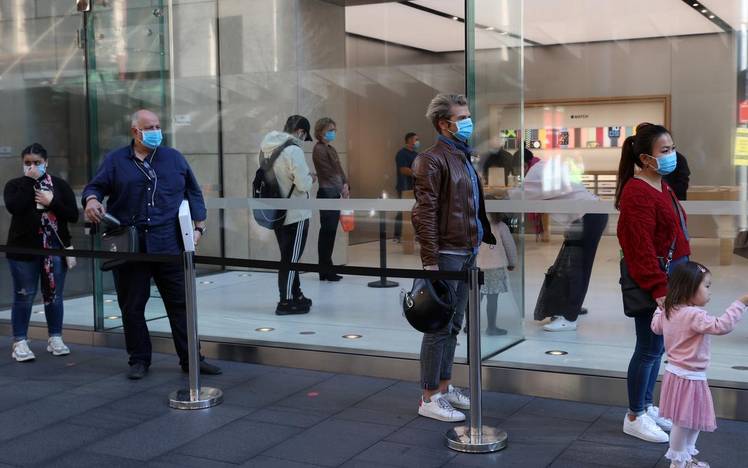People wearing protective face masks practice social distancing while waiting to enter an Apple store on the first day of New South Wales' further eased coronavirus disease (COVID-19) restrictions in Sydney, Australia, July 1, 2020. REUTERS/Loren Elliott
